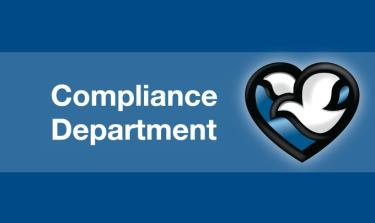




News and Events
The Elements of an Effective Compliance Program, Part II
Published: March 13, 2023
Welcome back to the “What is Compliance?” article series, where we discuss the who, what, when, where, why and how of the Methodist Health System Compliance Department. Earlier articles discussed our compliance program at a high level and our Code of Conduct. This and future articles will touch on hot-button compliance issues and other compliance-related topics.
In the previous article of the series, we addressed the first four of the seven elements of effective compliance programs that have been identified by the Office of Inspector General – Standards, Policies, and Procedures; Compliance Program Oversight; Training and Education; and Open Communication and Reporting Systems. We’ll now explore the final three elements.
5. Monitoring and Auditing
Monitoring and auditing are separate practices that are both designed and intended to advance the mission of the Compliance Department of detecting and preventing fraud, waste, abuse, and other noncompliant behaviors. Monitoring is completed by managers/directors across Methodist Health System, and manager/director vigilance is the first line of defense in identifying inappropriate and noncompliant behavior. Auditing is a deeper dive, often into sensitive or susceptible areas, to verify that no issues exist. The Compliance Department partners with the Internal Audit Department and the Compliance Committees to conduct audits. Monitoring activities often lead to audits, and completed audits are often followed up with additional monitoring.
6. Corrective Action Plans
A corrective action plan, or CAP, is how Methodist Health System fixes problems and issues that have been identified. A CAP must represent reasonable steps to make sure the problem or issue doesn’t reoccur. Actions that could be included in a CAP are: updating policies and procedures, process changes, training, implementation of monitoring and auditing, reporting of findings to executive leadership or government agencies, and disciplinary actions.
7. Discipline for Noncompliance
As part of a corrective action plan, the Compliance Department, along with the Legal and Human Resources Departments, makes recommendations for disciplinary actions when an employee at any level is found to be behaving in a noncompliant manner. As with all disciplinary actions, the Just Culture Algorithm and Behavioral Improvement Guidelines will be applied. Discipline can be a vital part of a corrective action plan because it discourages reoccurrence of the bad behavior and demonstrates to any outside investigator that the matter has been taken seriously.
Looking Forward
And just like that, everyone is an expert on compliance! Well, maybe not an expert, but hopefully you now see how you can help the Compliance Department in supporting our Compliance Program. Also, know that you can contact the experts in the Compliance Department with any questions or concerns about issues related to compliance or ethics. Contact information for the team is found on the Compliance Intranet page.
This concludes our “What is Compliance?” article series. Future articles will be about hot topics in compliance and relevant compliance matters within the health system. If you have any compliance or ethics issues that you wrestle with or are passionate about, send us an email, and we’ll consider it as a topic for a future article. Stay tuned for more exciting compliance content.
